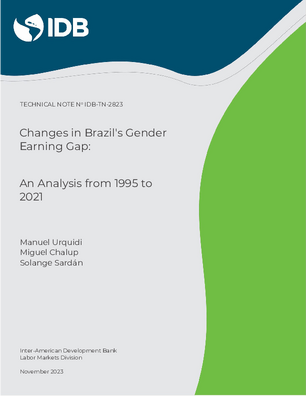Changes in Brazil's Gender Earning Gap: An Analysis from 1995 to 2021
Date
Nov 2023
The gender earnings gap in Latin America is an obstacle to achieving gender equality and sustainable development. In Brazil, this gap persists despite the fact that, in many cases, women have a higher labor profile than men, suggesting the existence of gender biases. It is also evident that this gap is greater among informal sector workers. Additionally, there is a difference in income, which generally favors men in most occupations. To analyze the gender earnings gap in Brazil between 1995 and 2021, this study uses the National Household Sample Surveys from the Brazilian Institute of Geography and Statistics (IBGE), harmonized by the Inter-American Development Bank (IDB). Two methodologies are presented for estimating it: the Blinder-Oaxaca decomposition and the Ñopo method. The analysis over more than two decades suggests the existence of biases or social norms in favor of men. It also allows us to observe a gradual reduction in the total gender earnings gap over the period considered. This indicates that additional efforts are needed to understand the recorded disparity. The analysis shows that, while the overall gap has decreased, as has happened in many other countries in the region, this reduction is generally related to the explained gap (derived from individuals' endowments in education, work experience, and age), and not to a reduction in the gap that cannot be explained by these variables. The latter could be associated with gender-differentiated norms, prejudices, biases, or discrimination, which persist over time.




